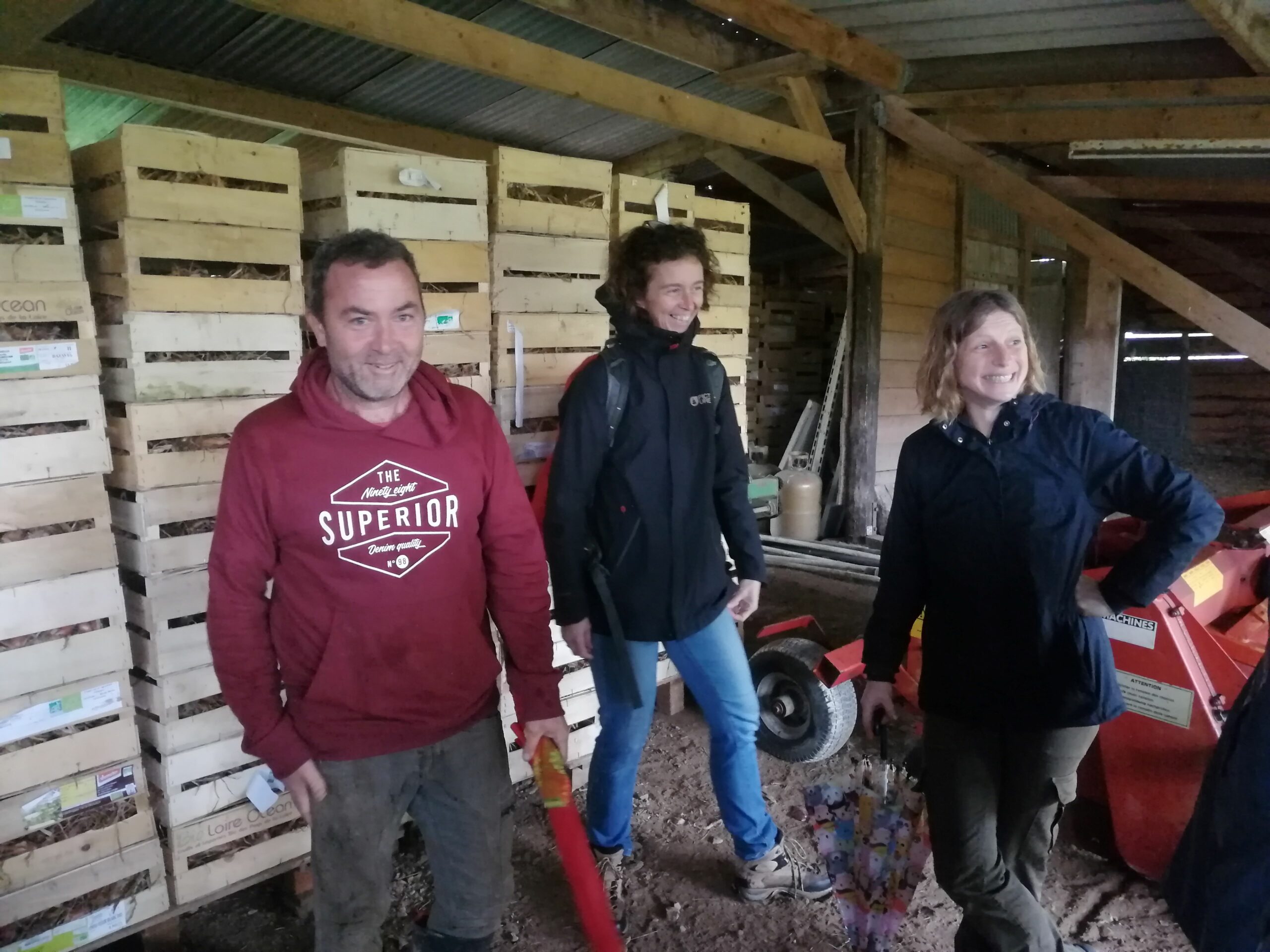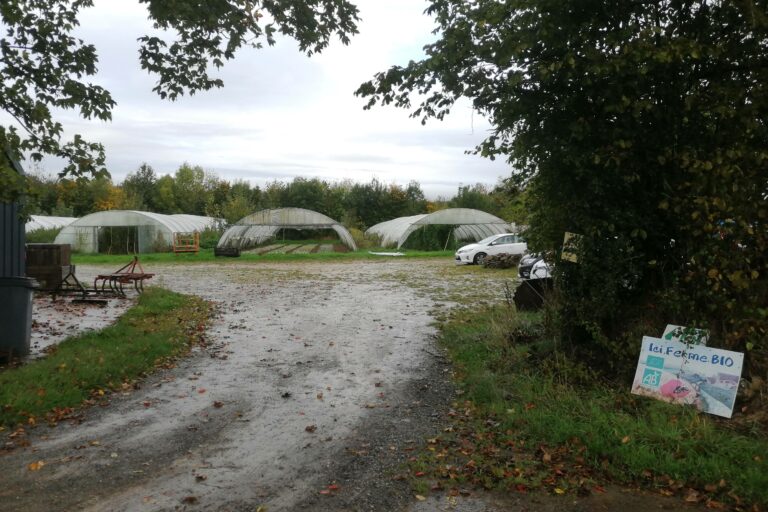Report on a farm visit by Jocelyn Parot, 19 October 2024.
You didn’t have to worry too much about the rain or the mud when you came to the field visit organised by the AMAP and the Louvigny Town Council at Cédric Levallois’ farm in Cahagnes on the morning of Saturday 19 October.
Fortunately, Marie, an employee of Aux légumes du Moulin, had provided extra umbrellas, and Cédric’s eco-built building made it possible to spend a good part of the morning in the dry, enjoying a hot drink.
The ten or so farmers present, including the Mayor of Louvigny, were able to talk in depth about the realities, developments and challenges of organic farming. For Cédric, who started farming organically in 2003, it’s obvious
“I can’t imagine working the land any other way than organically.”
He admits, however, that there have been many moments of doubt.

Cédric set up on his own, “outside the family framework”, on a bare plot of land. First there was the 50-metre-deep borehole, then the buildings he had to build himself. There was a lot of experimentation and trial and error, but today the 6-hectare farm, which supports 4 people, gives an impression of efficiency and productivity. Over the years, Cédric has made some technical leaps forward: the gas burner, for example, saves him precious hours in weeding.
However, it is not all roses: Galinsoga ciliata, a weed that “can produce up to 7,500 seeds in its eighth week, which germinate immediately” (Rustica), is the biggest threat to crops this autumn. Cédric explains that this plant is already present in all his plots, and that it can harbour insect pests and nematodes. Efforts will have to be redoubled to limit damage to crops.
Another latent danger, in the longer term, is the positions used in market gardening (squatting, bending, stooping, etc.), which can lead to osteoarthritis. That’s why tall crops are being developed: the kiwis, planted a few years ago, are already looking great. At the far end of the plot, an orchard should start to bear fruit in 2-3 years’ time.
To face all these challenges, you need a lot of human warmth: the brother who lives nearby and raises organic pigs; the quartet of employees, like Marie, who comes from the world of communications and lives a kilometre away in shared accommodation (an old farmhouse), who has been employed for 3 and a half years, Matthieu, Frédéric, not forgetting David, a seasonal worker.
There are also trainees, who find their way to the farm more easily and are systematically accepted.
So if you’re an AMAP farmer, don’t hesitate to spread the word!

In the lonely moments spent between the jangling potato sorter, the jamming shredder and the coughing onion chopper, there is still the pride, intact, of feeding families healthy food.
While 70% of the produce goes to 4 Biocoops in Caen and the surrounding area, there’s also the historic Saint-Sauveur market, a restaurant on rue Caponière in Caen, some direct sales from the farm and the very recent AMAP experiment. This experience has been very positive: the AMAP offers a real plus in terms of a stable and predictable outlet and a direct link with consumers. It’s a much less restrictive format than the collective purchasing scheme it previously provided.
On the basis of this experience, Cédric would like to launch a new AMAP near the farm. He is also looking to establish a direct relationship with school canteens, which are required by the EGalim law that came into force on 1 January 2022 to make at least 20% of their purchases from organic farming, but meeting these targets does not always mean buying from small local producers.
The visit was a rich experience, providing an insight into the complexity of interactions and the importance of rotation between crops and meadows to ensure the growth of that beautiful lettuce or Brussels sprout.
It also provided irrefutable proof that children are indeed born in cabbages… 😉


